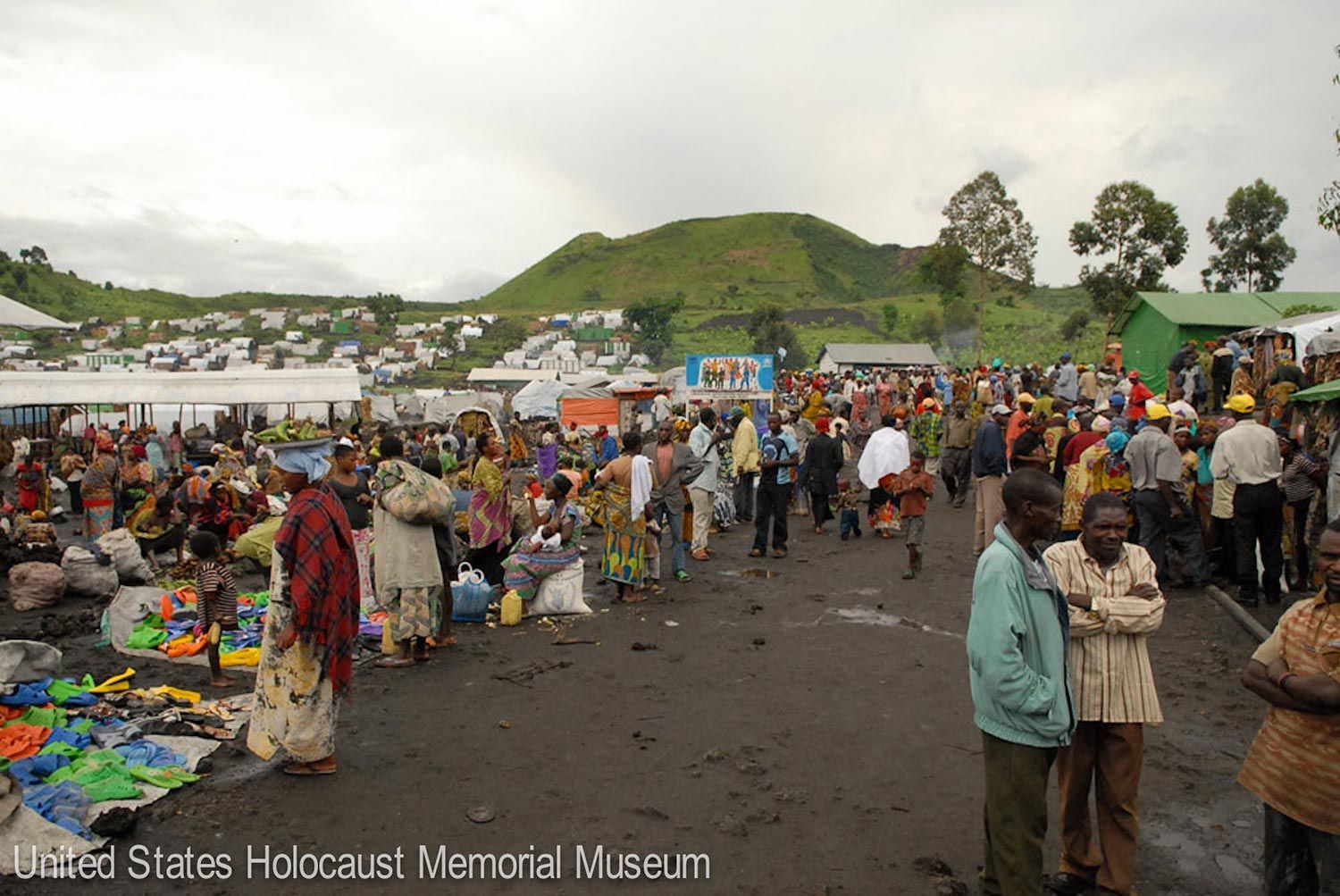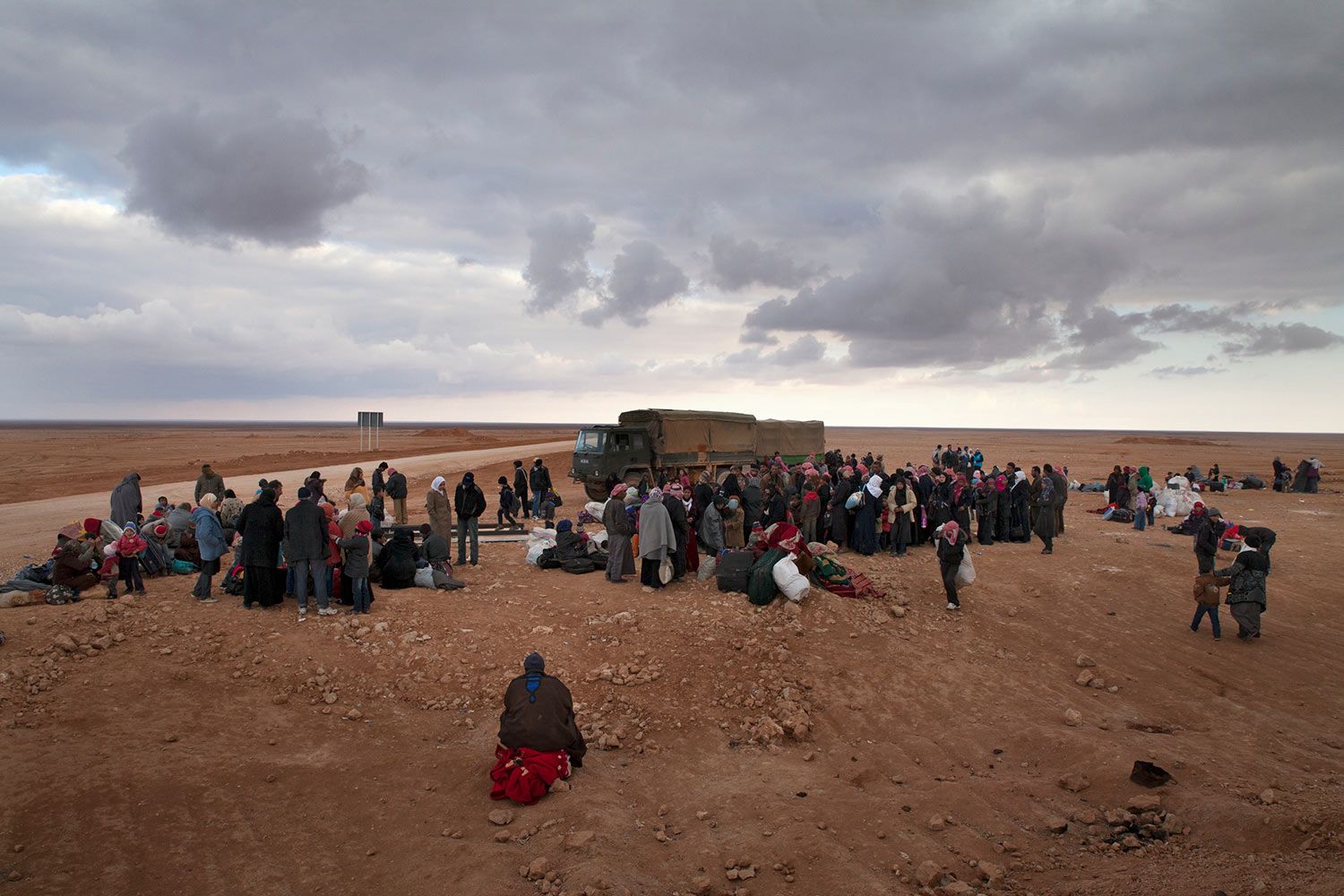This website does not support Internet Explorer, your current browser.
Please view the site with a modern browser such as Google Chrome or Mozilla Firefox.
Targeted Sanctions
Case Illustrations
Targeted sanctions were used in both the Democratic Republic of the Congo and Syria to help prevent or respond to mass atrocities. Read the brief illustrations below to learn how this tool was used in these cases:
Democratic Republic of the Congo (2015–18)

Goma, April 2009. —Michael Graham for US Holocaust Memorial Museum
From 2015 through 2018, government officials loyal to President Joseph Kabila committed human rights abuses against civilians protesting Kabila’s postponement of the 2016 election (HRW 2017). Throughout this period, government officials and security forces targeted political protesters, civil society groups, media groups, and religious leaders, leaving approximately 320 people dead, 3,500 injured, and over 8,000 imprisoned (Amnesty 2020). In response to the violence, the US implemented targeted sanctions against several senior government officials throughout 2016 and 2017. The targeted sanctions had two primary goals: to persuade Kabila and his security forces to exercise restraint against the political opposition and to ultimately force Kabila to adhere to the limit on his presidential term, allow for democratic elections, and step down (Pomper 2018). Targeted sanctions and continuing protests put pressure on the government to sign an agreement, mediated by the Catholic Church, in December 2016. The agreement stated elections would be held in 2017; however, elections were again postponed until 2018, and violence against civilians continued unabated during these years, particularly as militia groups expanded operations throughout the country (Crisis Group 2017). Multilateral coordination to implement targeted sanctions between the US and the European Union sent a common diplomatic message to Kabila that he should allow democratic elections. After a long delay, Kabila stepped down in 2018 in a mostly peaceful transition.
Syria (2011–present)

Refugees at the Syrian Border. —Lucian Perkins for US Holocaust Memorial Museum
Since the beginning of the civil war in Syria in 2011, the Assad regime has deliberately targeted civilian populations for attack. It is estimated that the Assad regime has killed almost 200,000 civilians, primarily Sunnis who make up the vast majority of the country, while civilians have also been targeted by ISIS, Russia, Iran, and other groups allied with Assad, and civilian casualties have additionally occurred at the hands of the US-led coalition and Kurdish forces (Syrian Network for Human Rights). Through successive executive orders under the International Emergency Economic Powers Act (1977), the US government targeted individuals and groups responsible for, and complicit in, the perpetration of human rights abuses by freezing the assets of Syrian government officials and other political elites. Sanctions targeting all financial activity from US persons or entities in Syria effectively prohibited all investment and economic activity in Syria (US Department of Treasury). These targeted sanctions were intended to stem state-sponsored atrocities against civilians and to ultimately facilitate democratic transition in Syria, as President Obama called on Assad to step down in August 2011 (Sharp and Blanchard 2011). Although targeted sanctions are intended to shield civilians from the economic impacts of a broader sanctions regime, some argue that the sanctions campaign contributed to the humanitarian crisis by effectively criminalizing the activity of the Syrian government as a whole, exacerbating fuel shortages, and complicating the provision of humanitarian assistance (Walker 2016; Samaha 2019). Despite the multilateral effort between the United States, the UK, France, Canada, and the European Union to implement targeted sanctions, President Assad has been able to evade negative financial repercussions and remain in power. Russia and China have prevented the implementation of broader UN sanctions against Assad through their role on the UN Security Council (Human Rights First 2012). As of winter 2021, Assad remains firmly in power in Syria and human rights abuses continue (Barnard 2019).